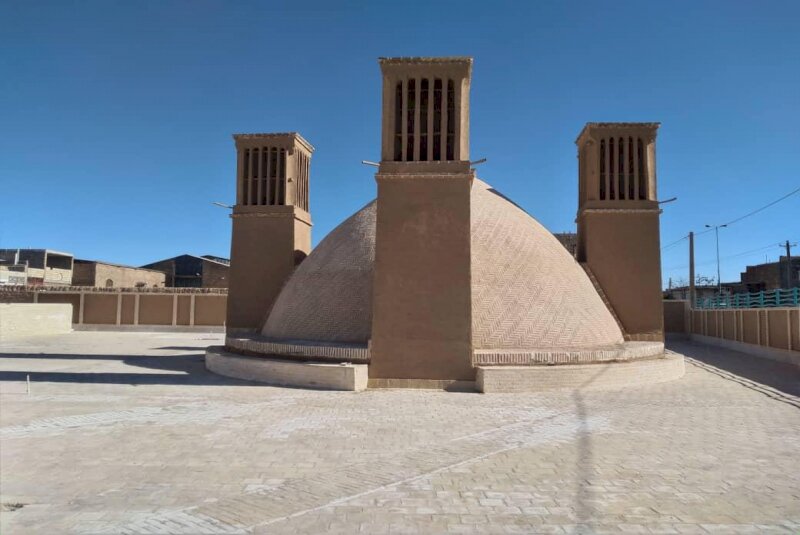Historical cistern in Yazd restored to former glory

TEHRAN-A historical Ab-Anbar (traditional mudbrick cistern) in Yazd province has been restored to its former splendor, the provincial tourism chief has announced.
The restoration project involved repairing the exterior decorations of the entrance gate, flooring, and cleaning the surrounding area, Mohammadreza Falahati said on Tuesday.
Made of stones, bricks, and mortar, the circular cistern is combined by four badgirs (wind catchers), which are used as traditional air conditioners, the official added.
The term Ab-Anbar is common throughout Iran as a designation for roofed underground water cisterns. It associates with water management systems in arid areas that are reliant on permanent springs or seasonal rainwater.
Such underground reservoirs or Ab-Anbars are parts of the iconic qanat systems, which rely on snow-fed streams flowing down from surrounding mountains.
Qanats, according to UNESCO, provide exceptional testimony to cultural traditions and civilizations in desert areas with an arid climate.
With its winding lanes, a forest of badgirs (wind catchers), mud-brick houses, atmospheric alleyways, and centuries of history, Yazd is a delightful place to stay, being referred to as a ‘don't miss’ destination by almost all travel associates in the region. The oasis city is wedged between the northern Dasht-e Kavir and the southern Dasht-e Lut on a flat plain ringed by mountains.
Yazd has an interesting mix of people as well, some 10 percent of whom follow the ancient religion of Zoroastrianism. Yazd Jameh Mosque, Dowlatabad Garden, the Yazd Atash Behram, also known as Atashkadeh-e Yazd, Towers of Silence, and adjacent desert landscape are among its tourist sites.
ABU/AFM
Leave a Comment